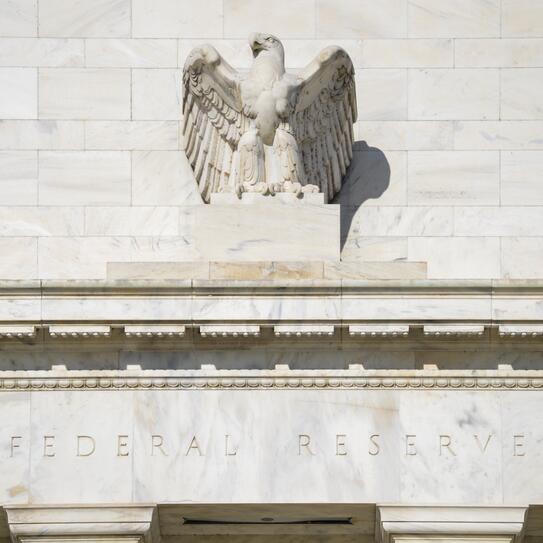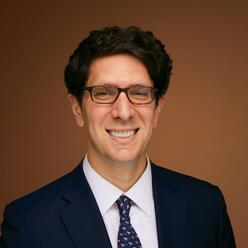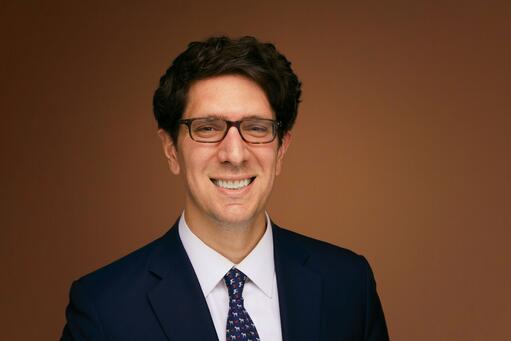Watching reports for signs of economic cooling that might mark an end to the recent cycle of steep interest rate hikes has become a national obsession. Reverberations from those increases are being felt in households across the country and affect both the political sphere and capital markets.
Fueling the uncertainty and fear is the specter of the severe inflation that occurred during the 1970s and early 1980s under the Federal Reserve’s then-chairman, Paul Volcker.
As the Federal Open Market Committee (FOMC) raised the federal funds rate by 75 basis points on Nov. 2, Columbia Business School Professor Pierre Yared shared his perspective, informed by his recent research.
Yared discusses the economic indicators he’s watching and how the current inflationary period differs from that of the ’70s.
Q: First off, are there any signs inflation is cooling?
Pierre Yared: Inflation has been evolving over time. If I look at it month on month, headline inflation has been lower and stabilizing. But there are specific areas of concern when it comes to core inflation, meaning inflation that excludes food and energy, and in particular, certain services and rent inflation. In order to start thinking that things are OK, we’d need to get into a situation where we actually see core inflation moving downward and surprising us on the downside, which it is not. It is continually surprising us on the upside.
Q: What indicators are you tracking to see where interest rates are going?
Yared: We know from speeches by [Federal Reserve] chair Jerome Powell as well as other members of the FOMC, that the Fed is prioritizing bringing down inflation above all else. But to get a sense of when the Fed may pivot, you want to look beyond just inflation because inflation responds with a lag. There are other indicators that are likely to move before inflation actually moves, which can provide some indication of the Fed pausing a little bit or reducing the pace of hikes. We want to look at measures of economic activity and, in particular, vacancies and employment.
Q: What are you watching on the employment front?
Yared: We recently saw an uptick in job postings for September, which surprised everyone. We even saw upticks in postings in construction, which was even more surprising. At the same time, we see some indicators of a slowdown, such as decreasing house prices. A big decrease in house prices should eventually translate into diminished economic activity and increases in unemployment, which will eventually have a ripple effect into a decrease in inflation. That’s the sequence in my mind of how things would be playing out. We have to see a significant decrease in economic activity for inflation to come back down.
Q: Do you see any signs of hope in the data?
Yared: One sign of hope is that inflation expectations have significantly diminished recently. So it seems like the private sector is anticipating a reduction in inflation. For this to work, we all have to believe that the Fed will not only raise rates now, while the economy is booming—which is relatively easy—but will also continue to raise rates even if the economy starts experiencing pain but inflation is still high—which is much harder.
That being said, we’ve also seen an increase in the dispersion of inflation expectations across surveyed participants, which means that inflation could be actually volatile going forward. The increase in dispersion is worrisome because it could suggest that inflation expectations have the possibility of becoming unanchored.
Q: Is it fair to compare our situation today with the rampant inflation of the ’70s and early ’80s?
Yared: There are definitely some similarities. First, as with the 1970s inflation, the current inflation began to show up in response to a fiscal expansion. The fiscal expansions of the Great Society program and of the Vietnam War triggered the inflationary period of the ’70s. Analogously, the large fiscal expansion that occurred during the pandemic is, at the end of the day, a root cause of a lot of the inflation we’re seeing.
Second, another commonality is geopolitics acting as an accelerant, adding fuel to the fire of fiscal expansion. In the 1970s, it was the Yom Kippur War and the OPEC oil embargo, as well as the 1979 Iranian Revolution. Today, it’s the geopolitical tensions resulting from Russia’s invasion of Ukraine, which exacerbated inflationary pressures.
A third similarity to the 1970s is that the Fed was totally caught by surprise. In both cases, at the onset of everything, the Fed was very accommodative.
Q: Where do you see differences?
Yared: There are three big differences that suggest that most likely inflation will not be as bad as the 1970s. First, there are structural differences to the economy now relative to the 1970s that limit the extent to which inflation can keep going up. In particular, unions are not as strong as they were before. With less collective bargaining, the wage-inflation spiral, where the demand for higher wages increases labor costs and fuels more inflation and so on, is less of a factor.
Another structural difference is that the energy intensity of the modern US economy is much lower than in the past. Even if we have some volatility in energy prices, we’re not as dependent on energy in terms of everything that we produce. The US is also now a large energy producer as well, which helps.
The second part of it, which relates to being caught by surprise, is that in the 1970s, the memory of the mistakes of the 1970s didn’t exist. Now central banks have that memory. They also have the memory of decades of inflation stability and a framework to achieve that, which they seek to get back to. They’re willing to prioritize inflation above all else, and that was certainly not the case during the 1970s, up until Paul Volcker came in. At that point, it was too late to start raising rates, and that’s why rates had to rise to such high levels to bring down inflation. The FOMC wants to avoid the mistakes of that era.
The third major difference between now and the ’70s is that there is significantly more debt out there now than there was in the past. That includes corporate debt, household debt, and public debt. As a consequence, it’s possible that the interest rate increase may have a larger and more potent effect now relative to the past in terms of working its way through the economy. We may not need as large an interest rate increase to slow down the economy and inflation.
Q: Everyone is understandably focused on inflation. Are there other economic indicators we should be concerned about for the future?
Yared: One risk I’m focused on is financial market stress. Financial markets as a whole do not seem to be signaling significant stress along the lines of what we saw during the global financial crisis or during the pandemic. For example, if you look at the Kansas City Fed’s measure of financial stress, it’s increasing slightly from extraordinarily low levels, so it’s not very high.
We do, however, see various measures of stress in the US Treasury market. For example, we see certain government bonds, which are more actively traded, suddenly trading at a much higher premium relative to the ones that are less actively traded, suggesting that the market for government bonds is not functioning as well as it should. Treasuries are an extremely safe asset that various financial institutions hold in part because they know they can always sell and buy them without facing too much market volatility and uncertainty. So, when I see Treasury market stress, I start to worry about that.


